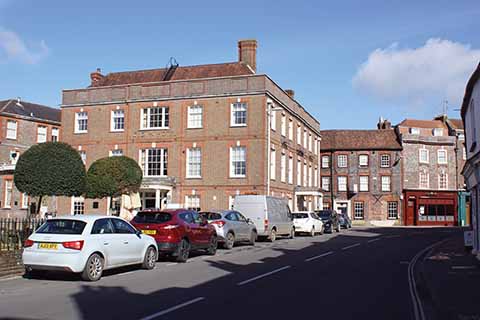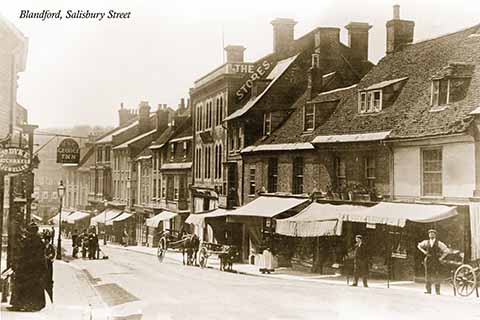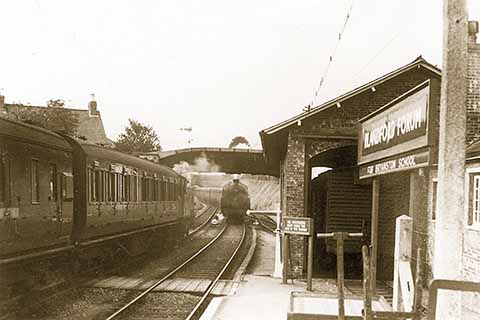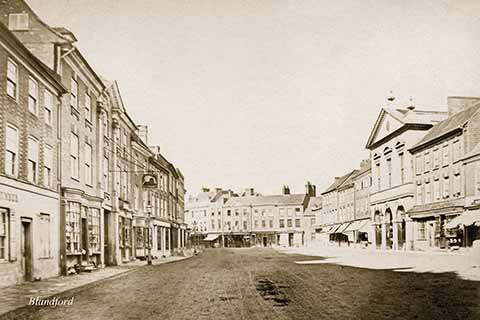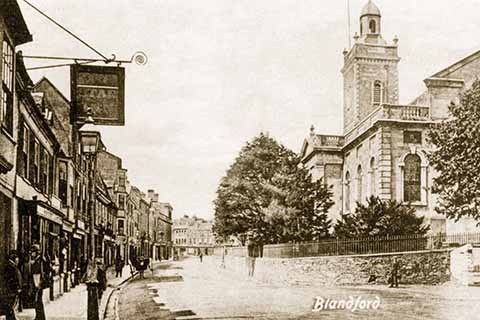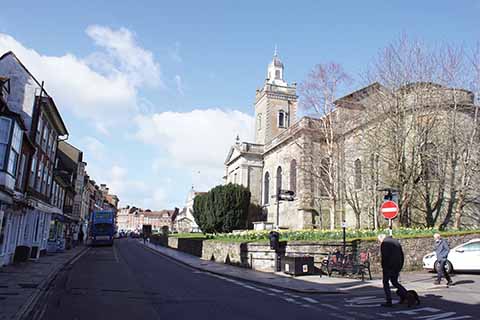Blandford then & now
Joël Lacey looks at how Blandford Forum has altered in the last 100 years
Published in May ’19
It may seem odd that a catastrophic fire should be good for building conservation, but in the case of Blandford Forum, that is definitely the case. Although the town has seen quite a lot of building activity around its fringes – not least the large new development currently behind the brewery – its core has remained a beautiful example of Georgian building.
As the memorial paving slab in the town’s centre so eloquently puts it: ‘Recipe for regeneration: take one careless tallow chandler and two ingenious Bastards.’
This slab refers to the Great Fire of Blandford Forum of 1731. The fire began at 2.00 on the afternoon of Friday 4 June 1731 in a tallow chandler’s workshop where White Cliff Mill Street meets Bryanston Street. A letter written on 12 June 1731 says ‘it was occasioned by the soap boyler’s apprentice making too great a fire under a furnace of boyling soap and as he endeavoured to rake part of the fewel at the furnace mouth, set fire to other furzes in the same room and in the space of an hour spread into different parts of the town with such fury that several of the poor workers, who were labouring to putt this fire out where it first began, had their own houses consumed before they gott home’.
In a forerunner of today’s charity telethons, special ‘charity in aid’ performances were staged at the Drury Lane theatre; the Royal Family along with many others gave a handsome sum of money for the recompense of those who had lost everything and for the re-building of the town.
An Act of Parliament followed in 1732 decreeing that Blandford should be re-built in brick and tile, and that signs of re-building must appear within four years of the Act.
John and William Bastard were deeply involved in a lot of the re-building. There were no more great fires in Blandford and the results of the Bastard brothers’ work are still there to admire today. As a celebration of its largely unspoilt Georgian architecture, the town holds an annual Georgian Fayre, which this year falls on Bank Holiday Monday 6 May, 10.00-5.00.
www.blandfordgeorgianfayre.co.uk
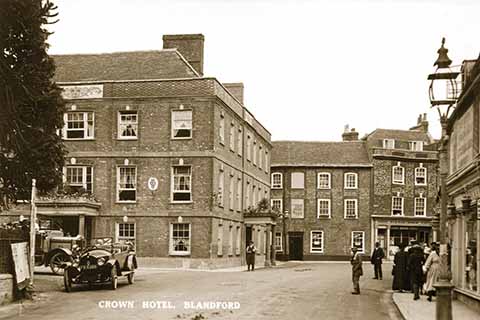
The wonky brickwork above Bishop’s Boot Market (now the Simla restaurant) is only slightly better in this 1920s shot of the Crown Hotel than the modern-day version. The hotel itself, with its two porticos, looks as elegant today, if not more so, than it did ninety-odd years ago.
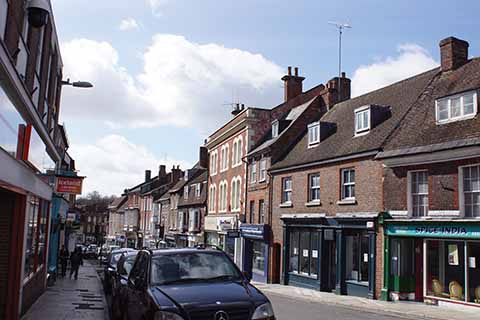
If you look carefully at the modern image, you can still see the remnants of ‘The Stores’ painted sign on the right of the shot. Salisbury Street is still dominated by retail outlets on the ground floor, but awnings are evidently not as popular now as a century ago.
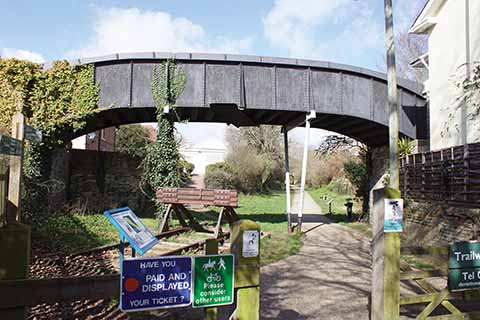
A hundred years ago, Blandford was connected to the rest of the country by rail. Now all that remains of it is the footbridge that can be seen in the Edwardian photo, and a set of buffers at an impractical if rakish angle to what is now the Blandford section of the North Dorset Trailway, a fourteen-mile stretch of former rail bed that stretches from Sturminster Newton to Spetisbury.
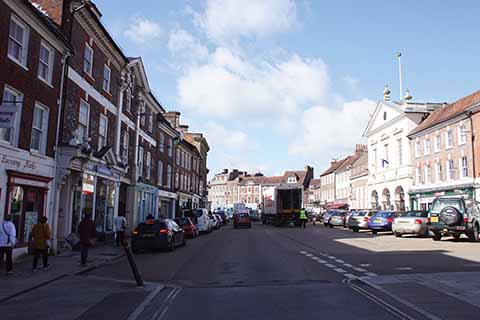
One of the stipulations of the 1732 Act of Parliament was that the streets of Blandford be widened to mitigate the effects of a single house fire and prevent it from spreading, and nowhere is this widening more obvious than in the market place, which still hosts markets in front of the Corn Exchange (which has gained a flagpole since 1910) on the right of the image as we look at it. The road surface has changed too, but not as much as the levels of traffic, which is a common theme in almost all the modern-day pictures.
